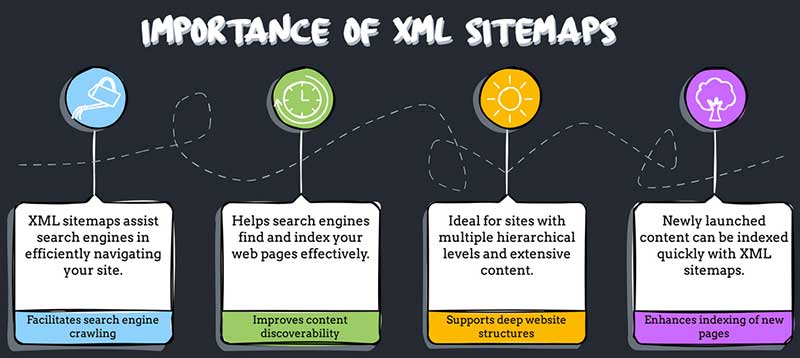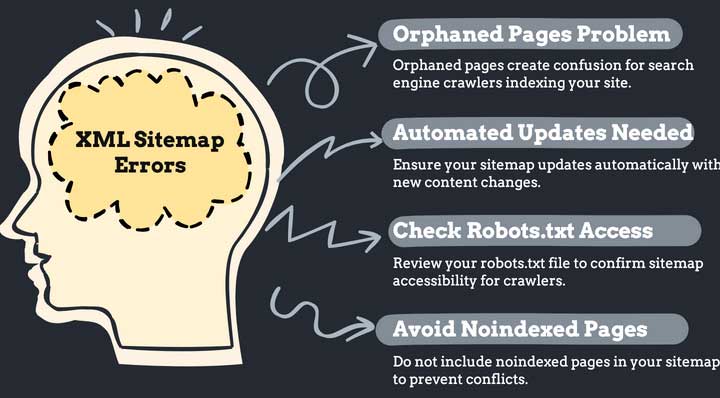When it comes to SEO, small details can make a big difference. One of those crucial elements that often gets overlooked is the XML sitemap. If you want search engines to properly crawl and index your site, mastering XML sitemap best practices is non-negotiable. Think of your sitemap as a roadmap for search engines; it tells Google, Bing, and other search engines where to go, what to prioritize, and how often to check back. If your sitemap isn’t optimized, you’re leaving rankings on the table.
Why XML Sitemaps Matter for SEO
Your website’s structure plays a big role in how search engines navigate and understand your content. An XML sitemap helps search engines efficiently discover your pages, especially if your site has:
- A deep structure with multiple levels of pages
- Frequent content updates (blog posts, product pages, etc.)
- Isolated pages not well-linked internally
- Newly launched content that needs to be indexed quickly
By following XML sitemap best practices, you ensure search engines have the clearest possible path to finding and ranking your content.

How to Structure Your XML Sitemap for Maximum SEO Impact
Not all sitemaps are created equal. If your XML sitemap is cluttered, disorganized, or missing key pages, you’re not maximizing its potential. Here’s what you need to keep in mind:
1. Include Only Index-Worthy Pages
Search engines don’t need to crawl every page on your site. Your XML sitemap should focus on pages that add value—ones you want ranking in search results. That means:
- Include: Core website pages, blog posts, landing pages, and product pages.
- Exclude: Admin pages, login pages, thank-you pages, and duplicate content.
If a page is set to noindex, it shouldn’t be in your sitemap.
2. Keep It Clean and Concise
A bloated XML sitemap slows down crawling and can send mixed signals to search engines. Keep it streamlined:
- Avoid listing URLs that redirect or return a 404 error.
- Remove old URLs that no longer exist.
- Keep it under 50,000 URLs—if you have more, break it into multiple sitemaps.
3. Use Proper URL Formatting
Make sure URLs in your sitemap:
- Use absolute paths (e.g.,
https://yourdomain.com/page/) - Match your canonical URLs (avoid duplicate variations)
- Use lowercase letters to prevent inconsistencies
Advanced XML Sitemap Best Practices for SEO Success
Once you have the basics down, take your sitemap optimization further with these advanced strategies:
4. Prioritize High-Value Pages with <priority> Tags
While Google doesn’t always follow priority tags strictly, setting them properly can help guide search engines. Assign priority values from 0.1 (low priority) to 1.0 (highest priority).
Example:
- Homepage:
1.0 - Core service pages:
0.9 - Blog posts:
0.7 - Older archive pages:
0.5
5. Set Accurate <lastmod> Dates
Your <lastmod> tag tells search engines when a page was last updated. This helps Google prioritize fresh content. However, don’t fake it—only update this when significant changes are made.
Example:
<url>
<loc>https://yourdomain.com/blog-post/</loc>
<lastmod>2024-03-15</lastmod>
</url>6. Submit Your Sitemap to Google Search Console
Even though search engines can find your sitemap automatically if it’s listed in your robots.txt file, submitting it directly in Google Search Console gives you more control. This helps you:
- Monitor indexing status
- Identify errors (like blocked pages or crawl issues)
- Get insights into how Google is processing your sitemap

Common XML Sitemap Mistakes That Hurt SEO
Even well-intentioned SEOs can make costly sitemap mistakes. Here’s what to avoid:
- Orphaned Pages in Your Sitemap – If a page is in your sitemap but isn’t linked anywhere on your site, it sends mixed signals to search engines.
- Sitemap Not Updated Automatically – If your sitemap doesn’t refresh dynamically when content is added or removed, it quickly becomes outdated.
- Disallowing Your Sitemap in Robots.txt – Some site owners accidentally block their sitemap in their
robots.txtfile. Double-check that search engines can access it. - Including Noindexed Pages – If a page is set to
noindex, it shouldn’t be in your sitemap. Otherwise, Google gets conflicting instructions.
Optimizing for Multiple Sitemaps (If Needed)
Large websites, e-commerce platforms, or multi-language sites often benefit from multiple sitemaps. Some effective approaches include:
- Category-Specific Sitemaps: Create separate sitemaps for blog posts, products, and landing pages.
- Image and Video Sitemaps: If media is critical to your SEO, use dedicated sitemaps for images and videos.
- Multilingual Sitemaps: If you target different languages, create
hreflang-specific sitemaps.
For complex sites, an index sitemap can consolidate multiple sitemaps under one file, ensuring search engines crawl everything efficiently.
Example:
<sitemapindex>
<sitemap>
<loc>https://yourdomain.com/sitemap-pages.xml</loc>
</sitemap>
<sitemap>
<loc>https://yourdomain.com/sitemap-blog.xml</loc>
</sitemap>
</sitemapindex>Final Thoughts on XML Sitemap Best Practices
A well-optimized XML sitemap is more than just a technical SEO checkbox—it’s a strategic tool that improves crawlability, indexing, and rankings. By following XML sitemap best practices, you’re giving your content the best shot at appearing in search results.
If you’re looking to improve your website’s technical SEO and want expert guidance, schedule a consultation today!
Let’s optimize your sitemap and unlock your site’s full potential.
Also, let’s connect on LinkedIn! I share insights on SEO Consulting insights, multi-channel marketing, and growth strategies regularly: https://www.linkedin.com/in/jonathansearle/.

